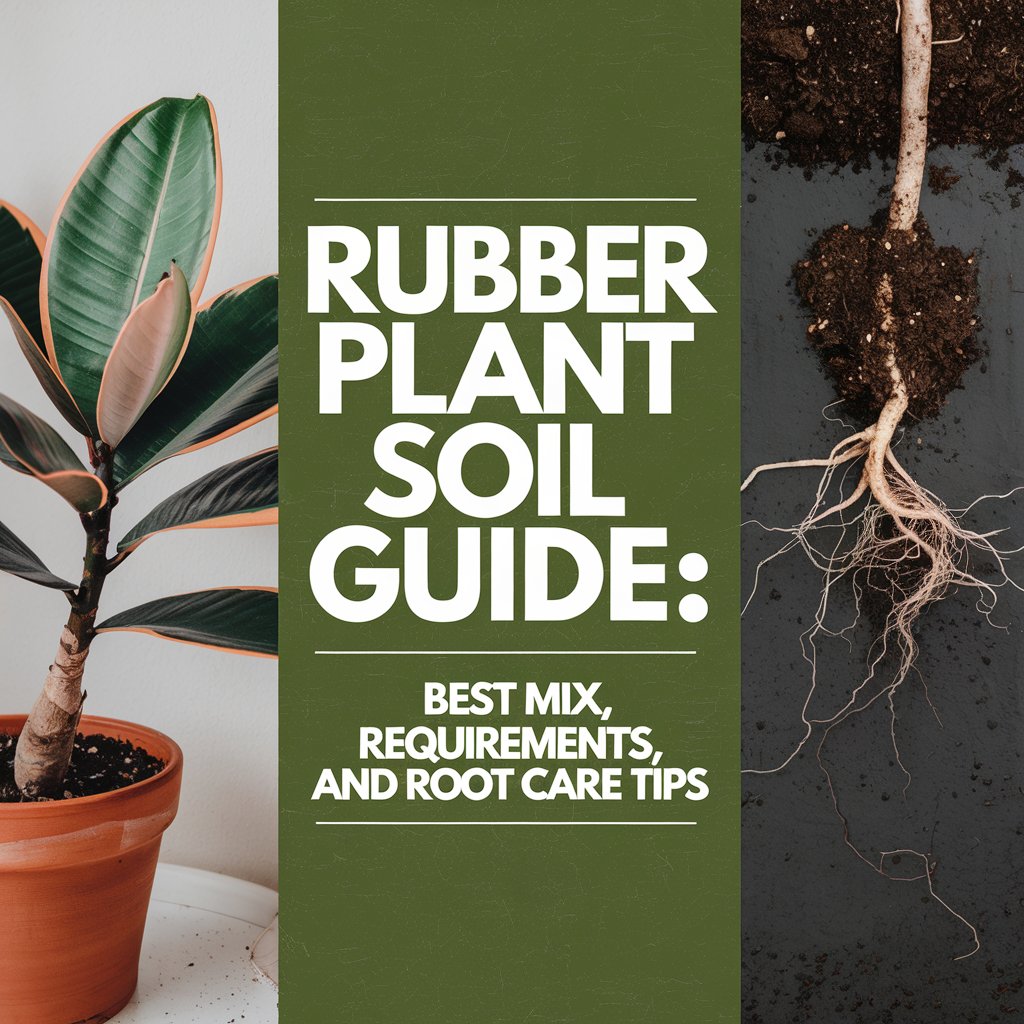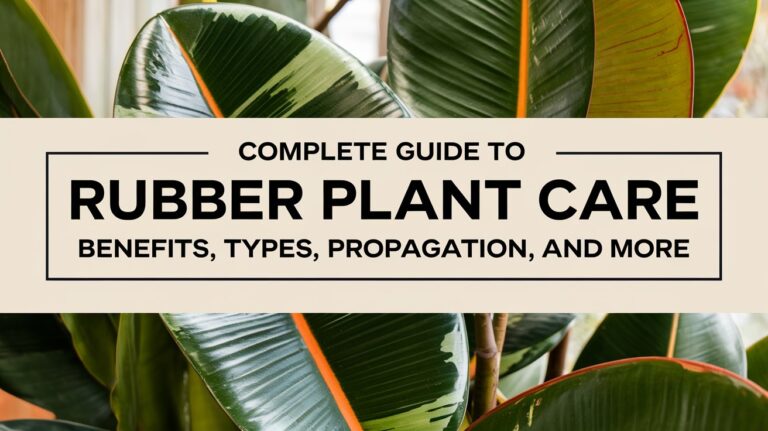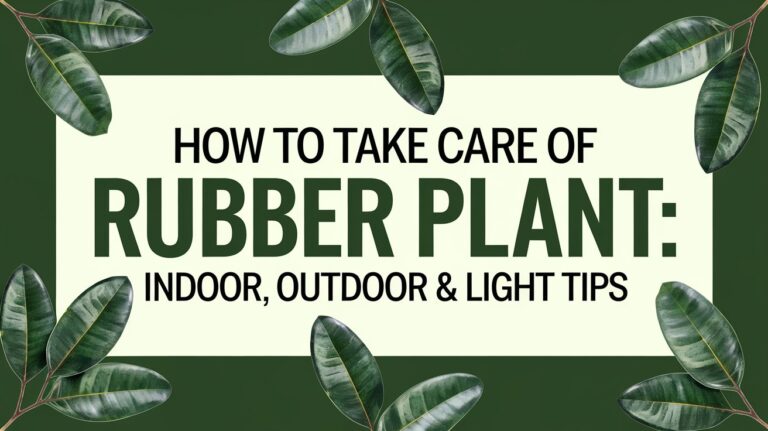If you’re anything like me, finding the right soil for your plants can feel like solving a puzzle. Over the years, I’ve learned that rubber plants (Ficus elastica) are incredibly rewarding to grow, but they thrive best when you get their soil just right. Whether you’re dealing with propagation, repotting, or troubleshooting issues like roots appearing above the soil, understanding their unique soil needs can make all the difference.
Why Soil is Essential for Healthy Rubber Plants
Rubber plants are resilient, but the soil you use plays a critical role in their overall health. It affects their water retention, drainage, and ability to absorb nutrients. The wrong soil can lead to issues like root rot, poor growth, or even stunted leaves. But don’t worry—finding the perfect rubber plant soil isn’t as hard as it seems. Once you understand their preferences, you can create a mix that ensures your plant thrives.
The Best Soil for Rubber Plants
Key Characteristics of Rubber Plant Soil
Rubber plants love soil that balances moisture retention with excellent drainage. Too much waterlogged soil, and you risk root rot; too little, and your plant dries out. Ideally, the soil should be:
- Well-draining: Prevents roots from sitting in excess water.
- Nutrient-rich: Supports lush, vibrant growth.
- Light and airy: Promotes root aeration.
DIY Rubber Plant Soil Mix
Here’s my go-to recipe for a versatile rubber plant soil mix:
- 40% potting soil (provides nutrients and structure).
- 20% perlite or pumice (improves drainage and aeration).
- 20% peat moss or coco coir (retains moisture without waterlogging).
- 20% compost or worm castings (adds essential nutrients for growth).
This mix works perfectly whether you’re planting a rubber plant cutting in soil or repotting a mature plant.
Understanding Rubber Plant Soil Requirements
To keep your rubber plant healthy, consider these essential soil factors:
Drainage is Non-Negotiable
Rubber plants can’t tolerate soggy roots. If the water doesn’t drain quickly, you might notice rubber plant roots above soil, which is a sign they’re struggling to breathe. Use pots with drainage holes and avoid heavy clay soils.
Moisture Balance is Key
While rubber plants enjoy slightly moist soil, overwatering is a common mistake. Let the top inch of soil dry out before watering again.
Nutrient-Rich Soil for Growth
The nutrients in soil for rubber plant growth should include nitrogen (for leaves), phosphorus (for roots), and potassium (for overall health). Regularly refresh your soil mix or use a balanced fertilizer to keep your plant happy.
Can You Use Cactus Soil for Rubber Plants?
If you’re wondering whether cactus soil for rubber plants is a good option, the answer is yes—with some adjustments. Cactus soil provides excellent drainage, but it doesn’t retain enough moisture for rubber plants. To make it suitable, mix in peat moss or coco coir for added water retention, and enrich it with organic compost for nutrients.
Rubber Plant Propagation in Soil
Propagating rubber plants is one of the most rewarding parts of plant care. When I first tried rubber plant propagation in soil, I was amazed at how quickly a cutting can develop into a thriving plant with the right care.
Steps to Propagate a Rubber Plant Cutting in Soil
- Take a healthy cutting: Choose a stem with at least one node.
- Prepare the soil mix: Use the DIY mix above to ensure proper drainage and nutrients.
- Plant the cutting: Insert the node into the soil and press gently around it.
- Keep the soil moist: Mist the soil lightly and cover the cutting with a plastic bag to maintain humidity.
- Place in indirect sunlight: Avoid direct sun, which can stress the cutting.
Patience is key—roots can take 4–6 weeks to develop fully.
Root Care Tips for Rubber Plants
Rubber plant roots are the foundation of a healthy plant. Here are some things to care for rubber plant that I’ve learned:
Dealing with Rubber Plant Roots Above Soil
If you see roots popping up above the soil, it could mean the plant has outgrown its pot, or the soil has compacted. Repot your plant in fresh soil, ensuring the roots are well-covered.
Regular Root Inspections
Whenever you repot a rubber plant, take a moment to check your plant’s roots. Healthy roots should be firm and white. If you notice mushy or blackened roots, trim them away to prevent further rot.
Repotting Your Rubber Plant: When and How
Rubber plants typically need repotting every 2–3 years, depending on their growth. I find repotting to be a great opportunity to refresh the soil and give the plant a fresh start.
- Choose a slightly larger pot than the current one.
- Prepare the soil mix to suit the plant’s needs.
- Gently remove the plant from its pot, being careful with the roots.
- Fill the new pot with fresh soil and position the plant.
- Water lightly and let the plant settle.
Frequently Asked Questions About Rubber Plant Soil
What’s the Best Soil for Rubber Plants?
The best soil is a well-draining, nutrient-rich mix with good aeration. My DIY mix is a great starting point!
Why Are My Rubber Plant Roots Above Soil?
This usually means the plant is root-bound or the soil has compacted. Repotting in fresh soil should solve the issue.
Can I Use Regular Potting Soil?
Regular potting soil is fine if amended with perlite and organic matter to improve drainage and nutrients.
How Often Should I Refresh the Soil?
Repot your rubber plant every 2–3 years or when you notice slow growth.
Conclusion: Set Your Rubber Plant Up for Success
Rubber plants are resilient and rewarding, but their success depends on the soil they grow in. By understanding the specific rubber plant soil requirements and creating a mix tailored to their needs, you can enjoy healthy, vibrant plants for years to come.
Whether you’re propagating a cutting, troubleshooting issues like rubber plant roots above soil, or simply refreshing the pot, remember that soil is the foundation of your plant’s health. Try out these tips, and let me know how your rubber plant journey goes. I’d love to hear your success stories—or help with any questions you have!
Hi, I’m Pritesh, the heart and hands behind Roots & Earth. My love for plants started when I was just 5 years old, planting trees alongside my grandfather. Those early experiences in the garden left a lasting impression, shaping my deep connection to nature and sparking a lifelong passion for nurturing green spaces.
With an MBA under my belt, I’ve blended my business acumen with my love for gardening, creating Roots & Earth as a way to share my knowledge and inspire others. When I’m not working in my own home garden, you’ll find me traveling to the mountains—my favorite getaway for reconnecting with the natural world.
At Roots & Earth, I’m here to guide you on your gardening journey, whether you’re a seasoned green thumb or just starting out. Together, let’s cultivate beautiful, thriving spaces that enrich our lives and the earth.




